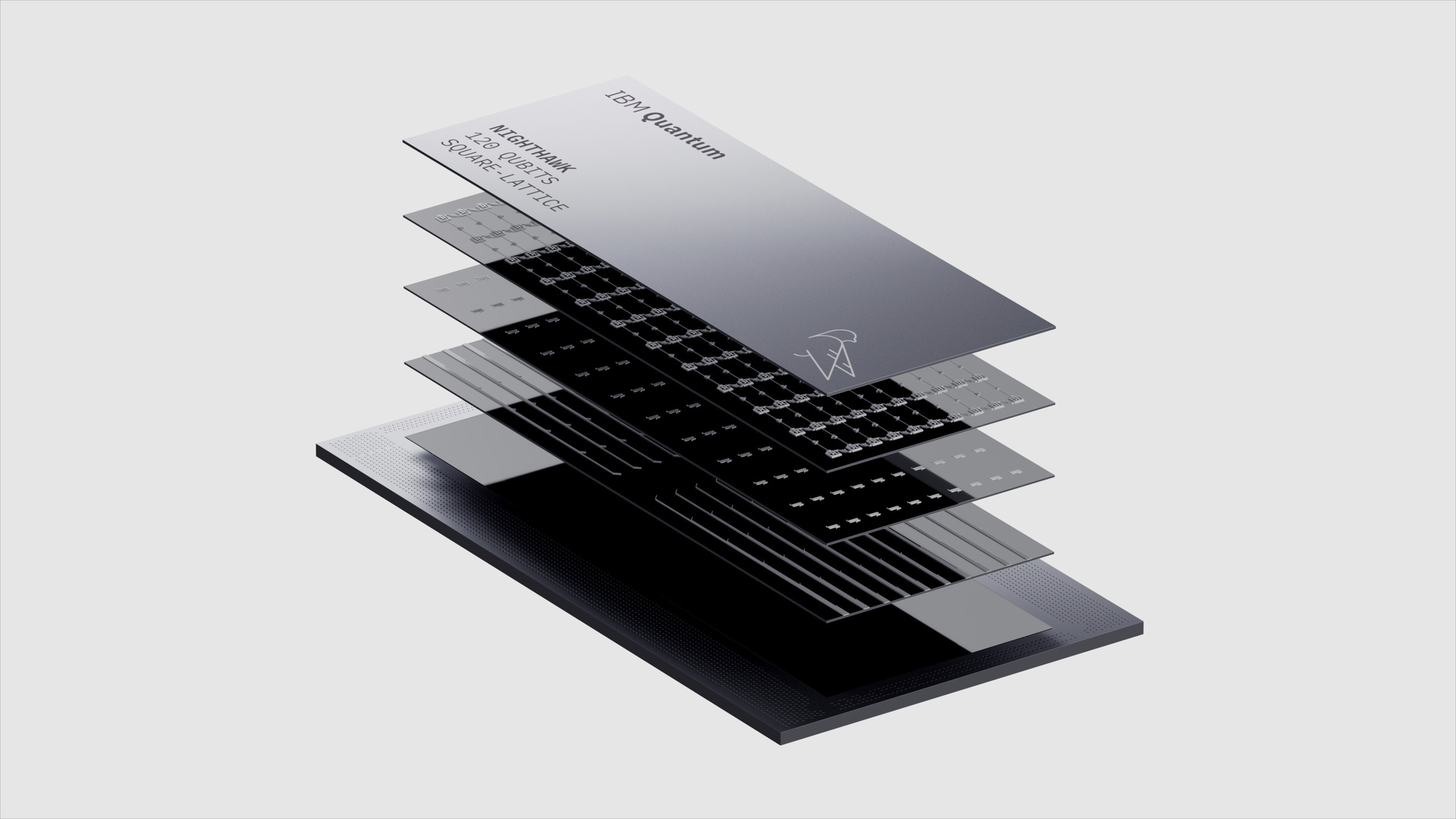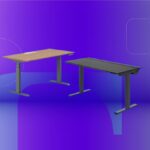IBM scientists have created two new quantum processing units (QPU) which they say will bring them one step closer to achieving a quantum advantage by next year, and a fully fault-tolerant system. quantum computer by 2029.
The first processor, called IBM Quantum Nighthawk, is a 120-qubit chip that can process quantum calculations that are 30% more complex than any of the company’s previous QPUs (Heron R2) could handle.
The company also launched another processor, IBM Loon, with 112 qubits, which scientists say includes all the elements necessary for complete fault tolerance: quantum computers that autodetect and correct all errors in real time.
New quantum processors
Nighthawk allows each of the processor’s 120 qubits to connect with its four nearest neighbors in a square lattice structure, thanks to 218 enhanced tunable couplers, components that govern the connections between individual qubits on the chip. This represents a 20% improvement on the number of couplers from the previous Heron processor.
This architecture will allow scientists to explore problems that require 5,000 two-qubit gates, fundamental entanglement operations necessary for quantum calculations.
According to IBM representatives, the company expects future versions of Nighthawk to be able to deliver up to 7,500 and 10,000 doors by the end of 2026 and 2027, respectively. Then, in 2028, IBM scientists plan to create Nighthawk-based systems with up to 1,000 qubits connected via long-range couplers to achieve 15,000 two-qubit gates.

Loon, meanwhile, is a smaller chip with just 112 qubits that IBM scientists say demonstrates all the hardware elements of fault-tolerant quantum computing. These technologies are designed to address the extremely high failure rate in qubits, a field known as quantum error correction (QEC). QEC is the main reason why quantum processors are becoming more sophisticated and not simply larger in terms of number of qubits.
In December 2023, for example, IBM scientists built a massive 1,000-qubit chip called Condor, but its much smaller cousin, the 127-qubit Eagle, was considered the more interesting prospect from a research perspective, given its five-fold lower error rate. The same can be said for Nighthawk compared to Loon.
Oliver Dial, CTO of IBM Quantum, told LiveScience that scientists needed new features in the processors to implement the error-correcting codes and couplers they intend to use in the long term. This includes six-way connections, which allow a qubit to connect with up to six of its neighbors, instead of the four of the last QPU. They also needed more routing layers on the surface of the chip, as well as longer couplers, as well as “reset devices” that reset the qubit to the ground state from the excited state.
“With Loon, for the first time, we tested all of these features together in a 112-qubit device,” Dial said. “However, to function as fault-tolerant memory, each of the more than 112 copies of these features on the chip must work extremely well. While this is the result we expect, realistically, performance may be poor at first on this complex device. Its goal is to allow us to troubleshoot and learn before Kookaburra next year.”
Kookaburra will be another proof-of-concept processor, expected in 2026, which IBM representatives say will be the first modular design QPU designed to store and process encoded information, combining logical operations with memory.
Achieving quantum advantage and beyond
In addition to launching two new QPUs, IBM has established a quantum advantage tracker. Quantum advantage occurs when a quantum computer can demonstrate problem solving beyond the means of a classical supercomputer.
Demonstrating quantum advantage is difficult because classical computers cannot easily verify or replicate the problems that quantum systems address. The first three challenges released as part of the tracker are “observable estimates,” “variational problems,” and “classically testable problems.”

The company also provided an update on manufacturing quantum processors on a 300 mm (12-inch) wafer. This new format, a large disk-shaped semiconductor that reflects light in rainbow colors, cuts the time needed to build each processor in half, while achieving a 10-fold increase in the physical complexity of quantum chips.
To build these wafers, long cylinders of silicon are cut into thin disks, and engineers use software to design electrical circuits. Automated machines then etch these circuits into the surface of the silicon, deposit new metals and treat the wafers, resulting in a rectangular grid of computer chips on the disk. Engineers fabricate multiple types of wafers and then complete additional processing steps, before layering and connecting them into a 3D stack, and connecting them to control electronics.
IBM scientists hope to deliver their first fault-tolerant quantum computing chip, called Starling, by 2029, and a monster 2,000-qubit Blue Jay chip will launch in 2033, according to the company’s report. quantum roadmap.
#IBM #unveils #quantum #processors #including #offers #blueprint #faulttolerant #quantum #computing










